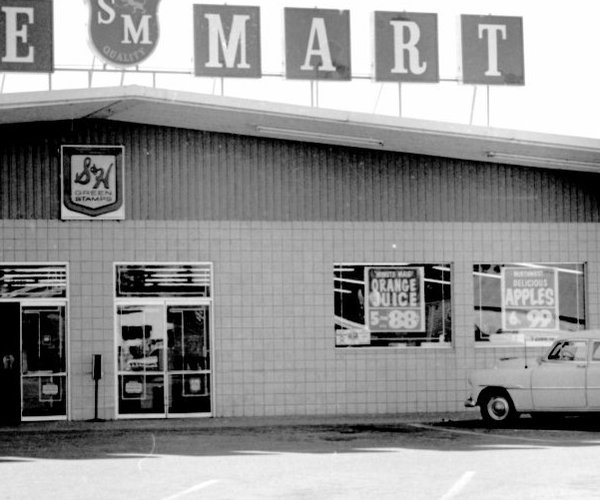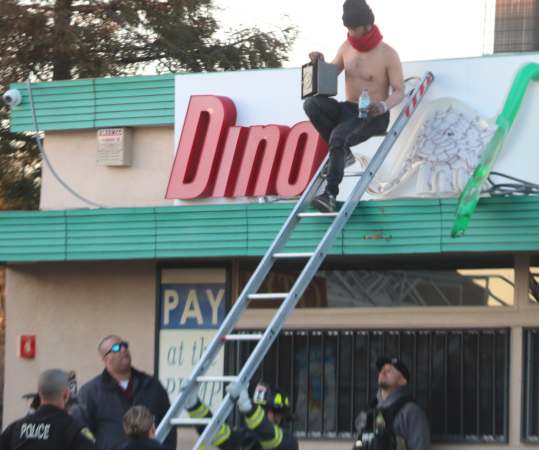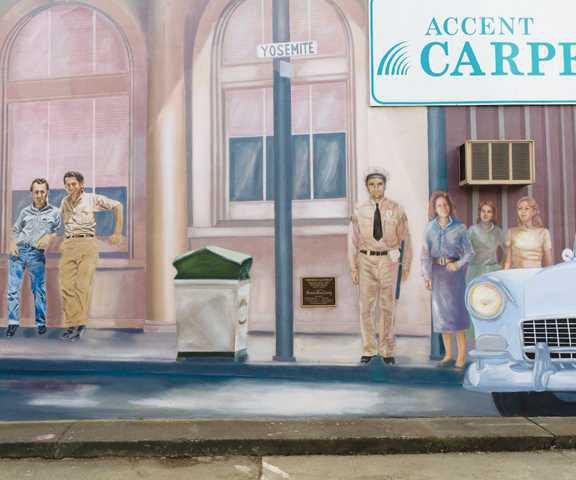Cross the Airport Way bridge across the San Joaquin today and the river looks benign.
The sand bar on the eastern bank below the levee protecting the vineyard now has a nice wide land bridge attaching it to the banks.
Across the way where 18 months ago flood waters made lapping noises not even a stone’s throw from Jimmy’s Oasis convenience store.
Now that area is high and dry above the river.
The bridge is just yards from the river’s confluence with the Stanislaus River.
From that point north is the “last miles” of the San Joaquin River Basin that drains 15,600 square miles from the Sierra crest to the valley floor.
This is where the trouble starts.
Head upriver toward Manteca and Lathrop.
There you will find what poses the real risk to 58,000 people and counting.
The inadequate levees fashioned during the heady days after the Gold Rush when new Californians were eager to restrain nature to transform 1,000 square miles of the Delta into some of the most prime farmland on the planet are the problem.
Many levees have been modified and re-enforced over the last 170 years, but by and large they are still based on the 19th century engineering that served as their foundation.
The last climatic catastrophe — the Great Flood of 1861-62 that left the majority of the Central Valley under water with parts of it 10 feet or deeper — was the inspiration to double down on levees.
For the greater Delta area, that was a time when the population of the region wouldn’t even match that of Ripon today, a city of 16,000.
The experts we entrust with our lives at the federal level sounded the alarm in 2005 after Hurricane Katrina triggered levee failures in New Orleans leaving that city in ruins.
The Army Corps of Engineers and other agencies in charge of flood protection assessed levees across the country.
They then pronounced the area with the most eminent threat as well as the potential for the greatest disaster to be none other than the Sacramento-San Joaquin County Delta.
Hence, the State of California mandating areas within 200-year floodplains to either enhance levees to withstand such events that have a 1 in 200 chance of occurring in any given year or face absolute building moratoriums.
A few years later, climate change models conducted by the state doubled down on the flood risk.
Due to historic precipitation patterns with a bit of help from man creating more impermeable surfaces in the San Joaquin River Basin that increases run-off, the maximum water volume flowing beneath the Airport Way bridge in flood events is expected to triple by 2070.
Between that and rising sea levels, ground zero for the ocean to take back land in California is the Sacramento-San Joaquin Delta.
Keep in mind this won’t happen overnight.
Instead, flooding will increase to the triple-the-flow as maximum over the next 46 years.
That means a flood event the existing levees couldn’t handle has a good chance of occurring within the next decade.
It is against that background that local leaders stepped up.
Cities and the county banded together to come up with a solution.
And after exhaustive studies they put forth one.
But in order to leverage state and federal funding to make the $331 million solution a reality, impacted property owners in the 200-year floodplain had to agree to tax themselves for 31 years.
They agreed to do so.
And, if all goes according to plan, all of the improvements will be in place by 2040-2041.
That is 17 years from now.
The timeline is dictated by a myriad of state and federal bureaucracies that must sign off.
It also requires an exhaustive environmental review process.
Keep in mind, back in 2005 the federal government warned there was an urgent situation needing to be addressed.
It’s so urgent that the project is going to take another 17 years to get in place.
That’s 17 years of bureaucratic roulette.
If luck doesn’t hold, impacted property owners could get hit with a double whammy of paying for flood protection not yet in place and damages from a flood their taxes were supposed to pay for a fix to avoid a flood from happening.
It is hard to circumvent the environmental impact process.
But in this case, it screams for a severely abbreviated process.
The work, except for the dry levee south of Manteca, is within a stone’s throw of existing levees.
It won’t impact the environment on the river side of the levees.
It is a given making the levees on the east side of the river so they can withstand a 200-year flood event will likely cause failure on the levees on the San Joaquin’s west side that were built with 100-year flood protection in mind.
More daunting is the permitting process.
There are a dozen plus agencies that need to sign off.
Levee work in the 21st century can be done quicker.
It is why 10,000 or so residents on Stewart Tract that a decade or so ago had none today enjoy 200-year flood protection.
Cambay Group, the developers of River Islands at Lathrop, worked diligently for more than a decade to get the OK to widen the existing levees to 300 feet.
After spinning their wheels making progress toward approval of a solution the federal and state governments demanded, they abandoned their plans.
Going through endless federal regulations they figured out that if they didn’t expand the existing levees, created a similar “earthen mound” a set number of feet away and then filled in the gap with dirt they would get the same result without having to secure permits.
The levees were in place two years later.
That says less about private sector ingenuity than it does the deadly chokehold the bureaucracy can and does exert on American lives.
Keep in mind this is not a rant in a vacuum.
Sacramento politicians — the very same ones who have told us climate change is the most pressing life and death issue facing California — have seen to it that bureaucratic red tape on multi-billion dollar sports arena projects that well-heeled campaign donors lust over is substantially reduced.
Making sure the Los Angeles Clippers have a sports arena sooner than later that can help increase billionaires’ bottom line on the public dime is apparently more urgent than fast tracking flood protection for 58,000 poor, working class, and middle class Californians.
Now you know the truth about progressive politics, Sacramento-style.
It’s the same old pack of lies.
The people simply don’t matter as much as the beautiful people.
Think about that the next time you wonder what it is like to dine at the French Laundry restaurant in Napa, the preferred dining option of California’s elitists.
This column is the opinion of editor, Dennis Wyatt, and does not necessarily represent the opinions of The Bulletin or 209 Multimedia. He can be reached at dwyatt@mantecabulletin.com






